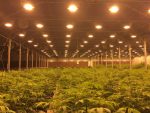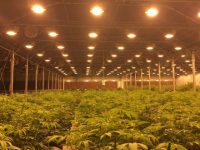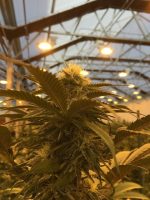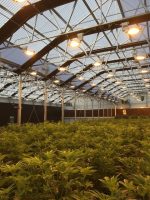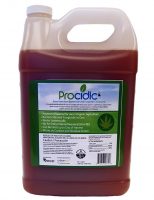Part 1 in this series went into a discussion of resource management for cannabis growers. Part 2 presented the idea of land use and conservation. In Part 3 below, we dive into pesticide use and integrated pest management for growers, through an environmental lens.
Rachel Carson’s book Silent Spring in 1962, is often credited with helping launch the environmental movement. Ten years later, VP Edmund Muskie elevated the environment to a major issue in his 1972 Presidential campaign against Richard Nixon. 57 years after Ms. Carson’s book, we’re still having the same problems. Over 13,000 lawsuits have been filed against Monsanto and last month a jury in Alameda County ruled that a couple came down with non-Hodgkin’s lymphoma because of their use of Roundup. The jury awarded them one billion dollars each in punitive damages. Is there a safer alternative?
“Effectively replacing the need for pesticides, we use Integrated Pest Management (IPM) which is a proactive program designed to control the population of undesirable pests with the use of natural predators, a system commonly known as “good bugs (such as ladybugs) fighting bad bugs”, states the website of Mucci Farms, a greenhouse grower. While this applies to cannabis as well, there is one major problem with the crop that isn’t faced by other crops.

While states are moving rapidly to legalize it, the EPA is currently not regulating cannabis. That is in the hands of each state. According to a story in the Denver Post in 2016, “Although pesticides are widely used on crops, their use on cannabis remains problematic and controversial as no safety standards exist.” Keep in mind that it takes a lot more pesticides to keep unwarranted guests off your cannabis plant when it’s outdoors than when it’s in a controlled environment.
We’re accustomed to using endless products under the assumption that a range of governmental acronyms such as NIH, FDA, OSHA, EPA, USDA are protecting us. We don’t even think about looking for their labels because we naturally assume that a product we’re about to ingest has been thoroughly tested, approved and vetted by one of those agencies. But what if it’s not?
Again, cannabis regulation is at the state level and here’s why that’s critical. The budget of the EPA is $6.14 billion while Colorado’s EPA-equivalent agency has a budget of $616 million. According to the federal budget summary, “A major component of our FY 2019 budget request is funding for drinking water and clean water infrastructure as well as for Brownfields and Superfund projects.” In short, federal dollars aren’t going towards pesticide testing and they’re certainly got going towards a product that’s illegal at the federal level. That should make you wonder how effective oversight is at the state level.
What impact does this have on our health and what impact do pesticides have on the environment? A former Dean of Science and Medical School at a major university told me, “Many pesticides are neurotoxins that affect your nervous system and liver. These are drugs. The good news is that they kill insects faster than they kill people.” Quite a sobering thought.
“We have the ability to control what kinds of pesticides we put in our water and how much pesticides we put in our water.”Assuming that he’d be totally supportive of greenhouses, I pushed to see if he agreed. “There’s always a downside with nature. An enclosure helps you monitor access. If you’re growing only one variety, your greenhouse is actually more susceptible to pests because it’s only one variety.” The problem for most growers is that absent some kind of a computer vision system in your greenhouse, usually by the time you realize that you have a problem it’s already taken a toll on your crop.
Following up on the concept of monitoring, I reached out to Dr. Jacques White, the executive director of Long Live the Kings, an organization dedicated to restoring wild salmon in the Pacific Northwest. Obviously, you can’t monitor access to a river, but you certainly can see the effects of fertilizer runoff, chemicals and pesticides into the areas where fish live and eventually, return to spawn.
“Because salmon travel such extraordinary long distances through rivers, streams, estuaries and into oceans they are one of the best health indicators for people. If salmon aren’t doing well, then we should think about whether people should be drinking or using that same water. The salmon population in the area around Puget Sound is not doing well.”
We talked a bit more about pesticides in general and Dr. White summed up the essence of the entire indoor-outdoor farming and pesticides debate succinctly.
“We have the ability to control what kinds of pesticides we put in our water and how much pesticides we put in our water.”
If you extrapolate that thought, the same applies to agriculture. Greenhouse farming, while subject to some problems not endemic to outdoor farming, quite simply puts a lot fewer chemicals in the air we breathe, the water we drink and the food we eat.








